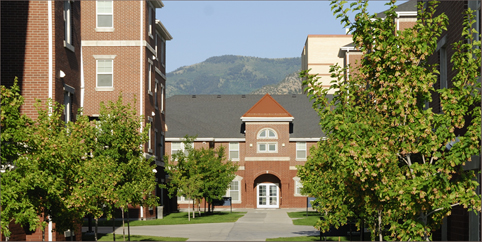
Service members place a high value on education and the availability of quality educational opportunities for their children. The Department of Defense (DoD) is committed to ensuring that all children of military families have the opportunity for a quality education that prepares them to be successful in their careers, leading contributors in their communities and productive citizens.
Military school-age children
Currently, there are approximately 1.2 million school-age children of military families and approximately 86,000 are enrolled in the 194 DoD Education Activity (DoDEA) schools around the world. The remaining 1.1 million students are enrolled in public or private schools off military installations, or in home-school programs.
Overview of on-installation schools
There are two distinct types of on-installations schools: DoDEA schools and public schools on military installations (PSMI). While there are approximately 86,000 military students enrolled in the 194 DoDEA schools around the world, there are an additional 80,000 school-age students who attend 160 PSMIs on installations around the country, 75,000 of which (94 percent) are military children. The 160 PSMIs are operated by the local education agencies (LEA)/public school districts where the installations are located; DoD has no authority over their operation.
DoDEA schools are grouped into one of three Area Service Centers, depending on the geographic location of the school: DoDEA Americas, DoDEA Pacific and DoDEA Europe. These three areas provide guidance and assistance to their districts in support of the unified DoDEA mission to provide an exemplary education for all students in the system:
DoDEA Americas. DoDEA Americas serves over 27,000 students through 66 schools in Georgia, Alabama, Kentucky, South Carolina, North Carolina, Virginia, New York, Puerto Rico and Cuba.
DoDEA Pacific. DoDEA Pacific serves over 23,000 students through 49 schools in Korea, Japan and Guam.
DoDEA Europe. DoDEA Europe serves nearly 36,000 students through 80 schools in Germany, England, Bahrain, Belgium, the Netherlands, Italy, Portugal, Spain and Turkey.
Current DoD investment strategies
Currently there are two investment strategies in place to ensure both DoDEA schools (schools operated by the DoD) and PSMIs are in compliance with quality standards:
Public Schools on Military Installations
Section 8109 of Public Law (PL) 112-10, “The Department of Defense and Full-Year Continuing Appropriations Act,” 2011. Section 8109 of PL 112-10 authorizes the DoD Office of Economic Adjustment (OEA) “to make grants, conclude cooperative agreements, or supplement other federal funds to construct, renovate, repair, or expand elementary and secondary public schools on military installations in order to address capacity or facility condition deficiencies at such schools.”
Education Review. In 2010, DoD established an Education Review directed to assess its effectiveness in meeting the educational needs of all military children and the physical conditions of the public schools on military installations. The Facility Assessment reviewed the facility conditions and capacity of 157 of the 160 public schools on military installations (three of the schools are new and were not included in the study). Based on the findings of the assessment, DoD developed a priority list of public schools on military installations with the most serious condition and/or capacity deficiencies.
Deputy Under Secretary of Defense Action Memo, “Approval of the DoD Public Schools on Military Installations Priority List and Grant Process,” July 19, 2011. The Deputy Secretary of Defense approved an Action Memo providing the approval for the DoD Public Schools on Military Installations priority list and detailing the grant process. More information is available by reviewing the Action Memo, the priority listing of public schools on military installations, prioritization methodology and the Grant Process.
Section 8109 of Public Law 112-74. Section 8109 of Public Law 112-74, the Continuing Appropriations Act 2012, signed by the President on December 23, 2011, provided for an additional $250M for the Department of Defense to continue addressing capacity and condition issues of public schools on military installations. The Department will work as before under the same protocol established for the first $250M and work down the list to help as many schools and school districts as possible until all funds are exhausted.
Inclusion of LEAs. Only LEAs that operate a public school on a military installation, and receive a written invitation from OEA, may request funds under this program. OEA will initially request proposal submissions from the LEAs with schools having the most serious capacity or facility condition deficiencies as determined by DoD. DoD will conduct an initial meeting with representatives of the invited LEAs, and representatives from their respective installations and states, to discuss the specific deficiencies noted for the affected school, the purpose of the funding, the application process and the matching share requirement. As decisions are made, additional LEAs on the priority list may be notified until all funds are exhausted.
The DoDEA School Facility Recapitalization Program. To ensure compliance with quality standards, DoD surveys DoDEA schools on a three-year cycle, measuring and assessing their condition:
The key areas for the triennial assessment are condition, capacity, and age using the Department of Defense Quality Rating (Q-Rating) standards:
Q-1 100% to 90% – Facility new or well maintained (Good Condition)
Q-2 89% to 80% – Facility is satisfactorily maintained (Fair Condition)
Q-3 79% to 60% – Facility is under maintained (Poor Condition)
Q-4 59% to 0% – Facility should be considered for replacement (Failing Condition)
Based on these assessments, DoDEA has developed a five-year investment plan of $3.7 billion for fiscal years 2011-2016 to add, replace, and/or renovate schools. Currently, 134 of the 194 schools (70 percent) within DoDEA rate at the Q-3 or Q-4 level, meaning they are safe but under-maintained or need to be replaced. The goal of the recapitalization plan is to ensure all 194 schools are rated at a Q-1 (new or well-maintained) or Q-2 (satisfactorily maintained) condition standard by fiscal year 2018.




